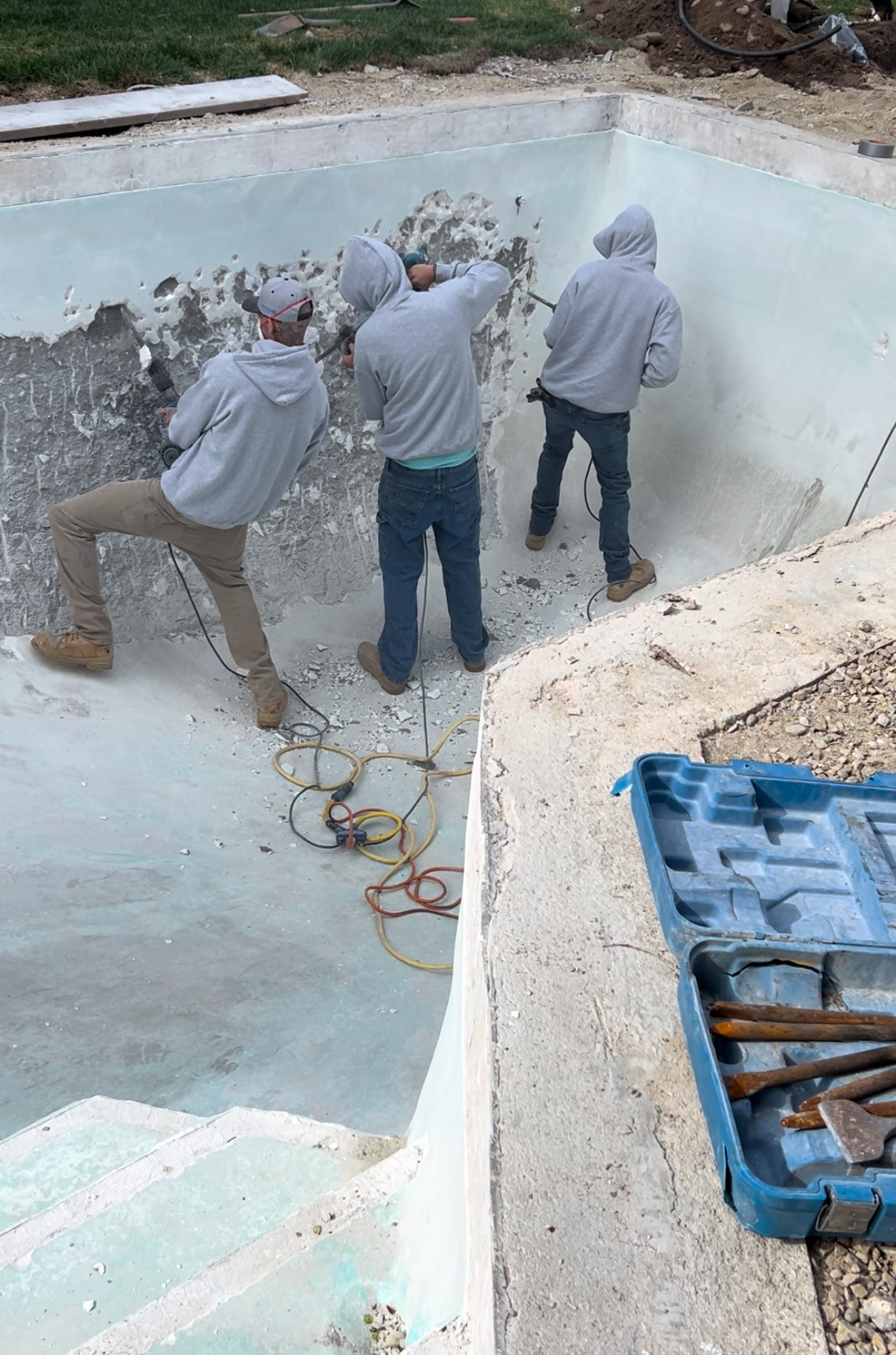When remodeling, the decision to remove old plaster is often a crucial step in ensuring the longevity and quality of the new finish. Two common methods for this process are chipping out the old plaster and sand blasting. Both techniques have their pros and cons, but chipping out the plaster offers several distinct advantages over sand blasting, particularly when it comes to preparation, preservation, and control.
Better Preparation for New Plaster
One of the main benefits of chipping out old plaster is the superior preparation it provides for the new plaster application. This method allows for the targeted removal of problem areas, such as hollow or delaminated plaster. By addressing these issues, you create a better surface for the new plaster to adhere to. This not only enhances the bond strength but also ensures a more even and durable finish. In contrast, sand blasting can sometimes fail to remove these problematic areas effectively, potentially compromising the integrity of the new plaster.
Preservation of Underlying Structure
Chipping is a less aggressive method than sand blasting, making it a safer choice for preserving the underlying lath or brick structure. Sand blasting, while effective at removing surface materials, can sometimes be too harsh, potentially damaging the substrate beneath. This can lead to additional repairs and increased costs. Chipping, on the other hand, allows for a more delicate approach, reducing the risk of structural damage.
Inspection and Repair of Substrate
Carefully chipping away old plaster also provides an opportunity to inspect the condition of the underlying lath or brick. This inspection is crucial, as it allows for the identification and repair of any issues, such as rotting lath or crumbling bricks, before replastering. Addressing these problems early on can prevent future issues and contribute to the long-term stability of the wall. Sand blasting does not offer the same level of inspection, as it typically involves removing the surface material quickly without careful consideration of the underlying structure.
Controlled Removal
Another advantage of chipping is the ability to selectively remove damaged plaster while leaving intact sections in place. This targeted approach can be more cost-effective than full removal, as it reduces the amount of material that needs to be replaced. Additionally, it helps maintain the original character of the building, which is especially important in historic homes. Sand blasting, in contrast, tends to remove all material uniformly, which can result in unnecessary loss of sound plaster and additional work.
Reduced Dust and Mess
While both methods generate debris, chipping generally produces less fine dust compared to sand blasting. Sand blasting involves shooting abrasive materials at high speeds, which creates a significant amount of fine dust that can be difficult to contain and clean up. Chipping, though still messy, typically results in larger debris that is easier to manage and clean. This can be a significant advantage in occupied buildings or areas where dust control is a concern.
Maintaining Character in Historic Homes
For those working on historic properties, chipping offers the added benefit of preserving more of the original plaster. This can help maintain the solid character and historical integrity of old plaster walls. In contrast, the uniform removal associated with sand blasting can strip away these unique features, leading to a loss of historical authenticity.
FAQs
1. What is the main difference between chipping and sand blasting for plaster removal?
Answer: The primary difference lies in the level of control and preservation. Chipping allows for targeted removal of damaged plaster, preserving the underlying structure and maintaining the character of historic properties. In contrast, sand blasting is a more aggressive method that removes all surface material uniformly, potentially damaging the substrate and generating more dust.
2. Is chipping old plaster more expensive than sand blasting?
Answer: Yes, chipping is generally more labor-intensive and time-consuming, which can make it more expensive than sand blasting. However, the increased cost is often justified by the better preparation, preservation of the underlying structure, and the reduced risk of damaging historical features.
3. Can sand blasting damage the underlying structure of a wall?
Answer: Yes, sand blasting can be too harsh, potentially damaging the underlying lath, brick, or other structural elements. This risk is particularly high in older or historic buildings where the materials may be more fragile.
4. Is it possible to inspect and repair the underlying structure when using sand blasting?
Answer: Sand blasting does not provide the same level of inspection opportunity as chipping. Chipping allows for a careful examination of the underlying structure, enabling any issues to be identified and addressed before applying new plaster.
5. Which method is better for maintaining the historical integrity of a building?
Answer: Chipping is generally better for maintaining the historical integrity of a building. It allows for the preservation of more original plaster and avoids the risk of damaging the underlying structure, which is especially important in historic properties where maintaining authenticity is crucial.
Conclusion
While sand blasting might seem like a quicker and cheaper option, it lacks the precision, control, and preservation benefits offered by chipping out old plaster. Chipping, although more labor-intensive, provides a better surface for new plaster, allows for thorough inspection and repair of the substrate, and reduces the risk of damaging the underlying structure. Moreover, it generates less fine dust, making cleanup easier, and helps maintain the character of historic properties. The choice between these methods should ultimately be guided by the condition of the existing plaster, the specific needs of the project, and the desired outcome. For those seeking long-term durability and quality, chipping out the old plaster followed by a waterproof bond coating is often the superior choice.

